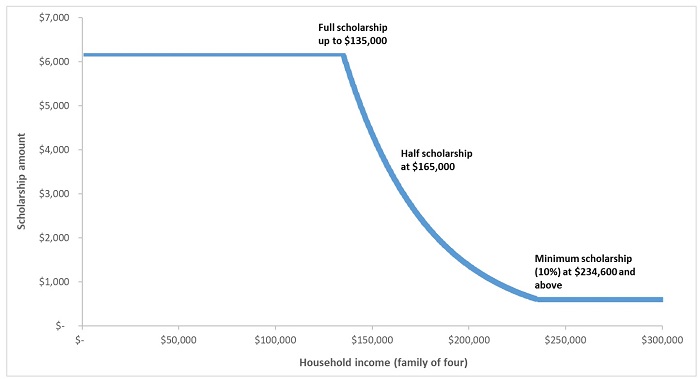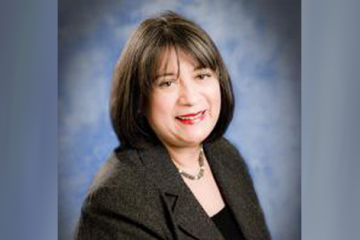In early July, Governor DeWine put the finishing touch on a landmark state budget by signing House Bill 33 into law. One of the noteworthy advances within a historically significant education budget is the move to universal eligibility for private-school scholarships across the Buckeye State. Starting this fall, all Ohio students will be eligible for state-funded scholarships through the EdChoice program. Previously, only low-income students and those attending low-performing public schools were eligible. (Under separate programs, students living in Cleveland and children with disabilities continue to be eligible for private school scholarships.)
Until these changes were made, most middle-income families were shut out of the EdChoice program—no matter how urgent their children’s needs for different schools. They either had to stretch to pay tuition or forego private school options altogether. For instance, a two-parent family in which dad worked as a firefighter and mom as a nurse likely had combined earnings that put them over the previous income limit. That changes under the new law: with universal eligibility, all Ohio families will be empowered to seek schools that best meet their children’s needs.
But would moving to universal choice shift the focus away from the state’s neediest students and toward families who need the dollars less? Fair question. So recognizing the importance of continuing to advance equity (and not over-stretching the state budget), Ohio lawmakers created a “sliding scale” for EdChoice. This mechanism, which will first be used in FY25,[1] gradually reduces scholarship amounts as household incomes rise. In a nutshell, here’s how it works.
- Full scholarships will be available for families whose earnings are at or below 450 percent of the federal poverty level (FPL). This is currently $135,000 for a family of four. In school year 2023– 24, that amount is expected to be $6,165 in grades K–8 and $8,407 in high school.
- Reduced scholarships will be available for families with higher incomes. At 450 percent of FPL, the “sliding scale” kicks in. For example, a family earning exactly 550 percent FPL will receive a grade K–8 scholarship worth half the full amount ($3,083). At 650 percent FPL ($195,000 for a family of four) it goes down to one quarter of the full amount ($1,541 in grades K–8).
- Minimum scholarships worth 10 percent of the full amount—$617 for grades K–8—will be available for families with incomes above 782 percent FPL.[2]
The mechanics of this sliding scale are complicated, but Figure 1 shows the expected results. A majority of Ohio families—likely around 70 percent—will be eligible for full EdChoice scholarships, while others qualify for lesser amounts. This approach should ease the minds of those worried that a universal program amounts to a “subsidy for millionaires.” It also reduces the expense of extending scholarships to the 90,000 some students who previously paid full tuition and had never received public support for their educations.
Figure 1: EdChoice scholarship amounts (grades K–8) for a family of four, by household income

Ohio has a proud history of being on the forefront of the educational choice movement, and the state’s private-school choice programs have steadily expanded over the past couple decades. With passage of this biennial budget, the legislature made eligibility universal. But it did so in a smart way that continues to recognize the importance of supporting low-income families who struggle to access private school options.[3] Kudos to Governor DeWine and Buckeye lawmakers for opening EdChoice eligibility to all in a fair and sensible way.
[1] In FY24—this coming school year only—the state will provide full scholarships up to 450 percent FPL, and then apply income “brackets” to reduce scholarships above that point (e.g., 450 to 500 percent FPL = $5,200 scholarship in grades K-8; 500 to 550 percent FPL = $3,650 scholarship).
[2] Continuing former policy, higher-income families above 450 percent FPL remain eligible for an unreduced scholarship through the “performance-base” EdChoice program if their children would otherwise attend a low-performing public school.
[3] Moving forward, legislators should consider further differentiation in scholarship amounts below the 450 percent threshold. For instance, they could create a “poverty weight,” akin to the DPIA component of the public school funding formula. This might provide 125 percent of the full scholarship amount for families below 200 percent FPL. That work, of course, is for another day.




